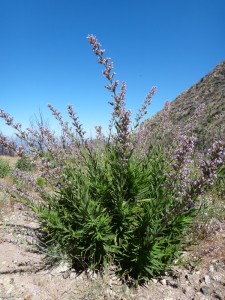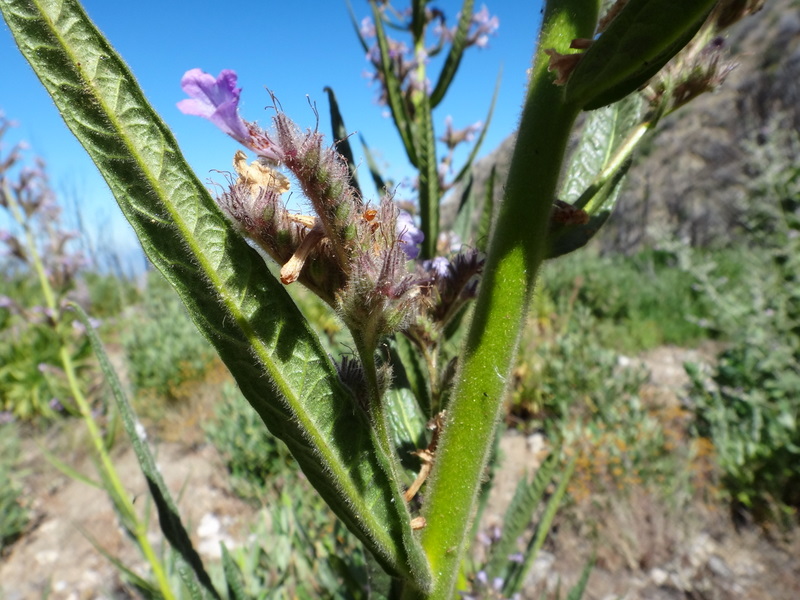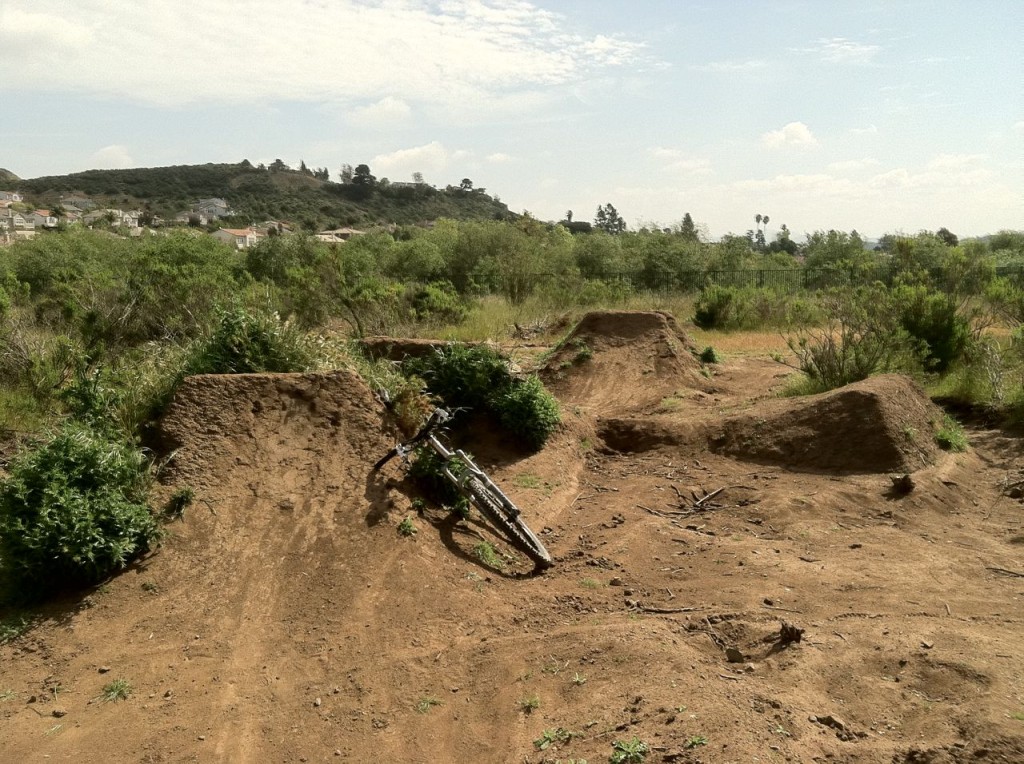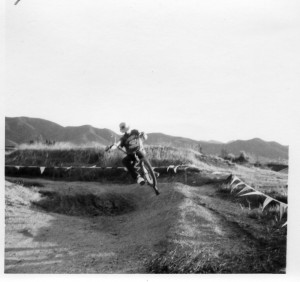 This pretty but toxic native bush is wreaking havoc on many trail users in the recently opened Station Fire area.
This pretty but toxic native bush is wreaking havoc on many trail users in the recently opened Station Fire area.
Many people have been returning to the Angeles National Forest since the opening of the trails in May. As summer weather entices riders to the high country, many are getting their first glimpses of a changed forest. One of those changes is the abundant Poodle Dog Bush.
Poodle Dog Bush, also known as Common Turricula, or Purple Flower Poodle Bush, is a beautiful purple flowered native bush. It’s an opportunist. Its seeds will lie dormant in chaparral areas for many years waiting for a major disturbance of the soil. Fire is one such disturbance, and the Station Fire has brought the bush back to life with a vengeance.
People often stop on the Angeles Crest Highway or along trails to pick the pretty purple flowers. It is unfamiliar to most people, and quite attractive. It has long slender serrated leaves and flower stems similar in appearance to Phacelia, though it has an upleasant, slightly pungeant odor. The stems grow from the base of the plant and it can grow to eight feet tall.
What people don’t realize is that the bush is covered with tiny hairs similar to stinging nettle, seen clearly in the close-up image below. However, there is no immediate pain or sensation like nettle gives. Poodle Dog hairs will latch on to bare skin or clothing and release a toxin to which most people will have a severe contact dermatitis type reaction. The swelling, rash and itching appear twelve hours to two days after contacting the bush, and the rash can last for two weeks or more and require medical attention. Severe cases can result in large blisters.
The bush is more prevalent at higher elevations, but can appear throughout the recently burned areas. Forest Service officials have stated that the current post-Station Fire bloom is the largest in recent history. Trail users and trail maintenance volunteers need to be especially cautious, as it has appeared along many trails including narrow single track trails where it is difficult to avoid.
If exposed to the bush, avoid scratching the affected area. Clothes, tools or other equipment that has come into contact should be handled with caution and washed separately from other clothes. Calamine or over-the-counter Hydrocortizone cream may provide some relief, but if blisters begin to form medical attention may be required. Poison Oak remedies such as Zanfel or Tecnu have little effect, but washing the area as soon as possible after exposure is advised.
We need to be aware of Poodle Dog Bush. It’s life-cycle can last up to ten years after a significant fire or other disturbance. Eventually it will die off and lay dormant once again, waiting for the next big fire to come back to life.



![scotland[1]](http://corbamtb.com/news/wp-content/uploads/2011/06/scotland1.jpg) “The idea of a healthy adventure activity, where you can just pick up your bike and go, has grabbed the imagination of the mass market,” Katrina Morrison, Scottish Enterprise, told the BBC.
“The idea of a healthy adventure activity, where you can just pick up your bike and go, has grabbed the imagination of the mass market,” Katrina Morrison, Scottish Enterprise, told the BBC.









